Radiator hose collapsed
Diagnose and fix a radiator hose collapsed condition
When you encounter a radiator hose collapse condition the first thing you should think of is VACUUM. If the collapse happens when the engine is cold, it’s because the cooling system is in a state of vacuum. If the radiator hose collapses while the engine is running it’s because the water pump is sucking and coolant isn’t flowing properly, creating a vacuum condition.
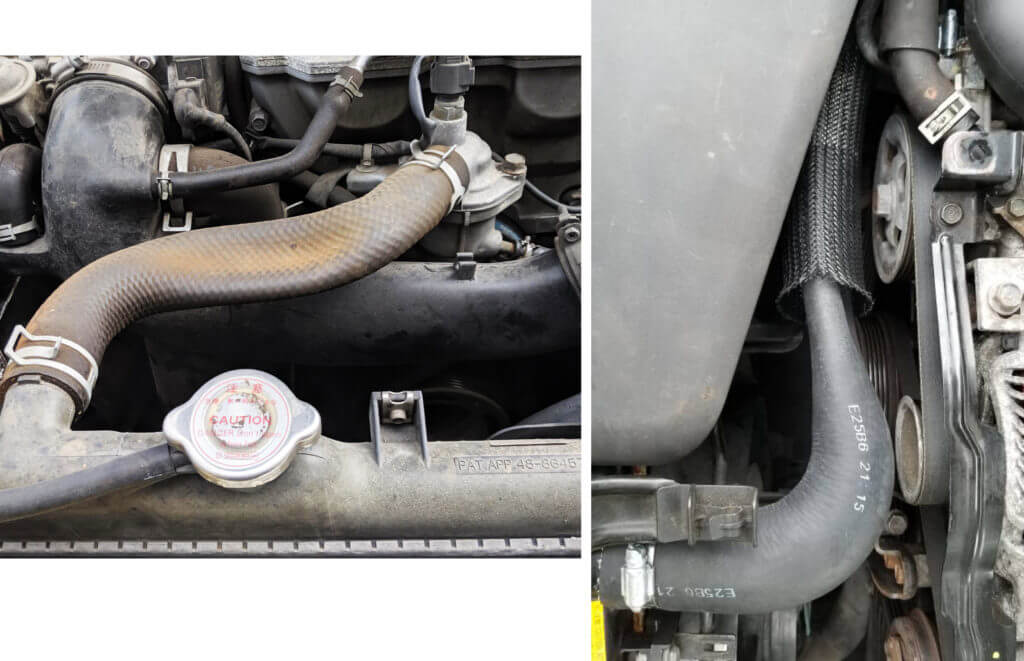
Bad radiator cap is the #1 cause of radiator hose collapse
Bad radiator cap—Coolant expands and contracts as it heats and cools. As the engine warms and coolant expands, a pressure relief valve in
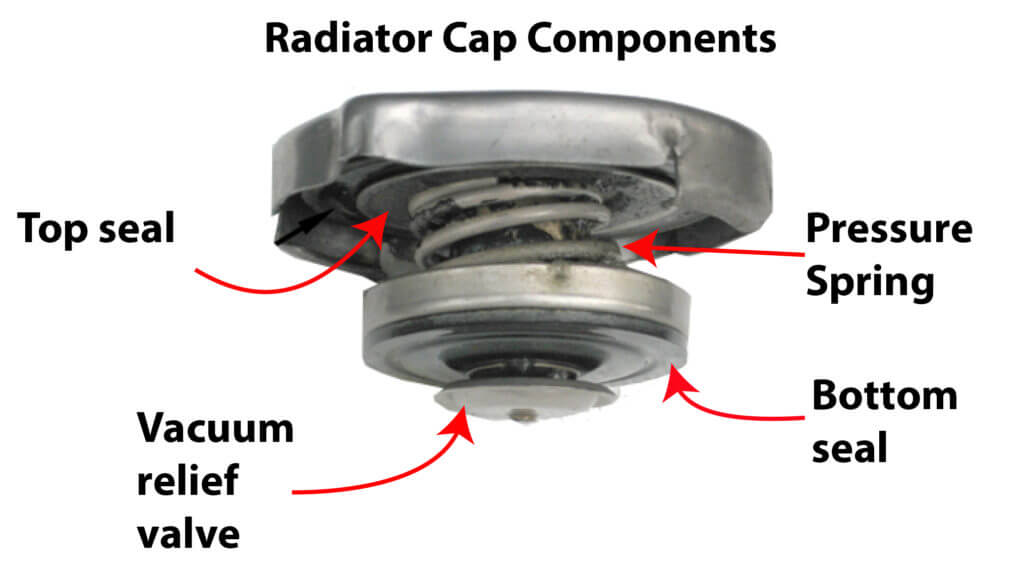
radiator cap relief valve
the radiator cap opens and allows the hot coolant to flow out of the radiator and into the overflow or coolant recovery tank. When you shut off the engine and the coolant cools and contracts, the contraction in the radiator creates a vacuum condition. When the vacuum reaches a certain preset level, the vacuum relief valve in the cap opens and allows coolant in the recovery tank to flow back into the radiator.
With the engine cool, remove the radiator cap and check for signs of corrosion or crud buildup. This cap is severely corroded and must be replaced. No amount of cleaning will restore it to operating condition.
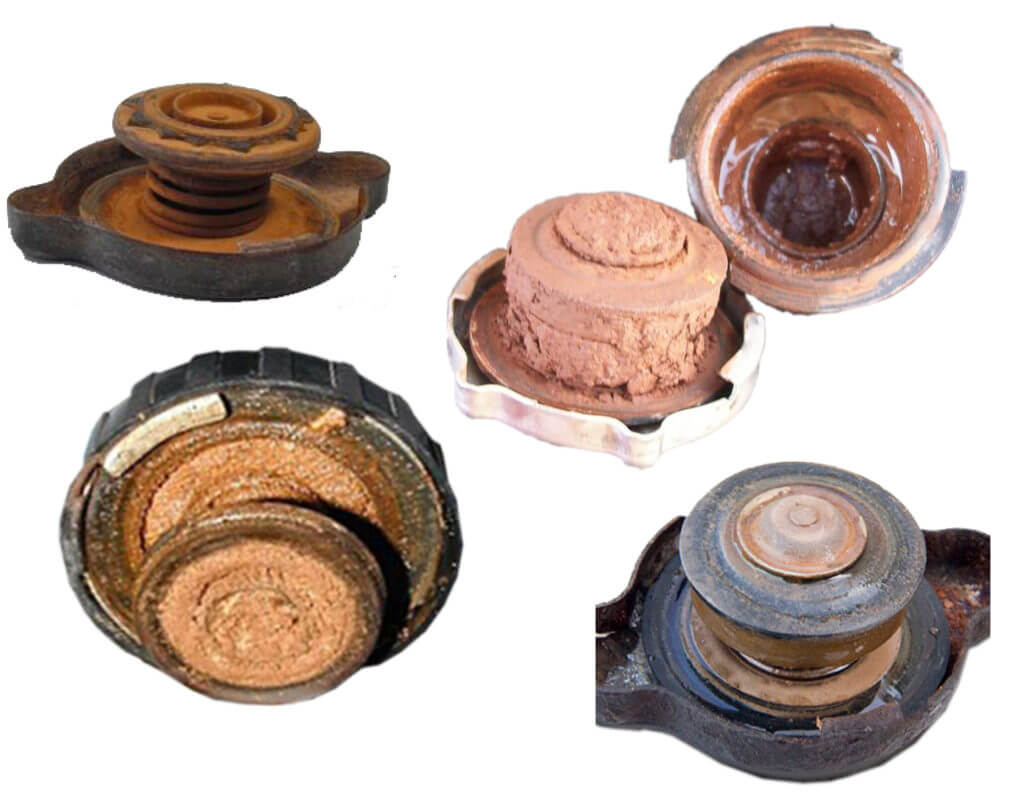
Any shop can test the cap using a pump action cooling system pressure tester
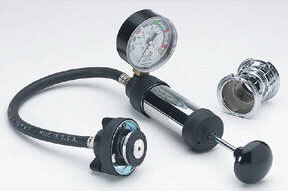
cooling system pressure tester
radiator cap tester. Or, you can rent a tester from an auto parts store. But it’s not worth the cost to rent or have yours tested. Radiator caps are cheap, usually less than $10. There are several sizes and pressure ratings. The pressure rating on the new cap must match the pressure listed on the old cap.
How to buy a new radiator cap
The easiest way to buy a new radiator cap is to simply go to the auto parts store or use an online auto parts seller and give the year, make, model and engine of your vehicle.
However, aside from the fit and pressure rating, you’ll usually have two choices; with or without a pressure release lever. A pressure release lever allows you to bleed any remaining pressure from the system before you remove the cap. It’s a useful feature if you routinely check your coolant and your engine isn’t always stone cold. The lever caps cost a bit more and they are convenient, but they’re not exactly necessary.
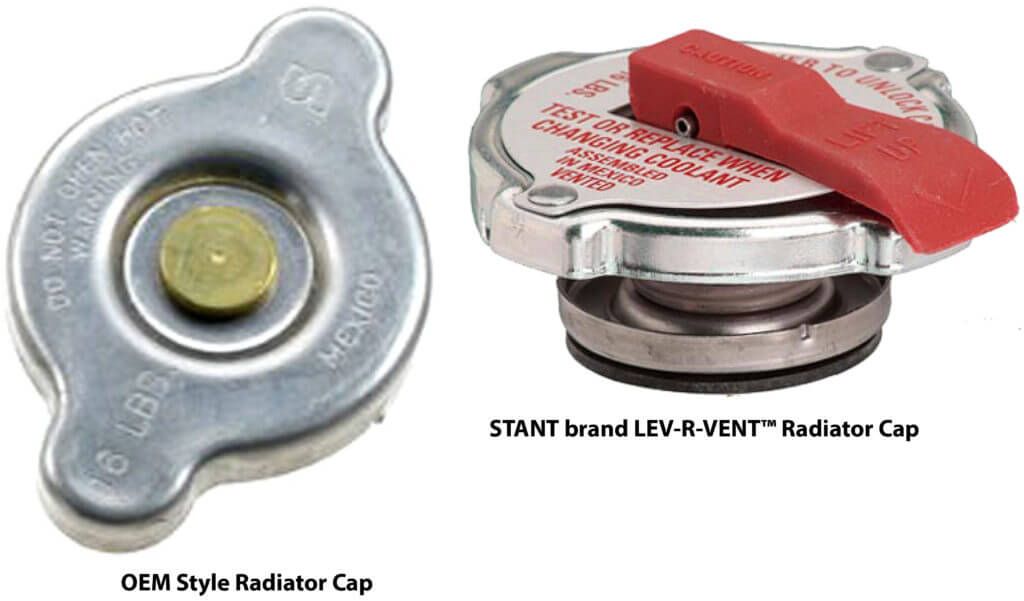
Deteriorated radiator hose is the #2 cause of radiator hose collapsed condition
Deteriorated hose. Rubber radiator hoses degrade over time and lose their ability to hold their shape.Rubber hoses deteriorate with age from the inside out. But they can also be damaged by oil. If you spill oil on a rubber radiator hose, you clean it off. Deteriorated radiator hoses lose their firmness and feel “spongey”. You can easily test a hose just by squeezing it. The rubber should feel firm and spring back as soon as you let go.
The lower radiator hose is subjected to the most suction pressure 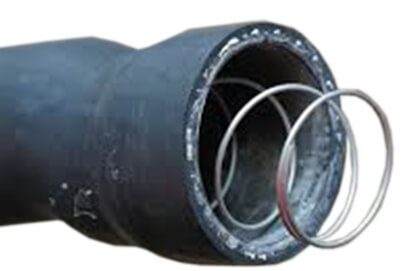 so car makers usually install a spring inside the hose to help it maintain it’s shape. However, if someone has replaced the hose and not installed the spring, the lower radiator hose can collapse.
so car makers usually install a spring inside the hose to help it maintain it’s shape. However, if someone has replaced the hose and not installed the spring, the lower radiator hose can collapse.
Stuck thermostat is the #3 cause of radiator hose collapsed condition
When your engine is running, the water pump is sucking coolant from the radiator and forcing it through the engine and heater core. But the thermostat is the traffic cop in this system. It’s fully closed when the engine is cold to prevent the coolant from circulating. That forces the coolant to heat up. Once the coolant reaches about 165°F begins to open and allow some coolant flow. At 195°F, the thermostat should be fully open. If the thermostat fails in the closed position, the water pump will attempt to pull coolant from the radiator and that can cause the upper radiator hose to collapse. However, this stuck radiator condition will also cause the engine to overheat.
©, 2019 Rick Muscoplat
Posted on by Rick Muscoplat
